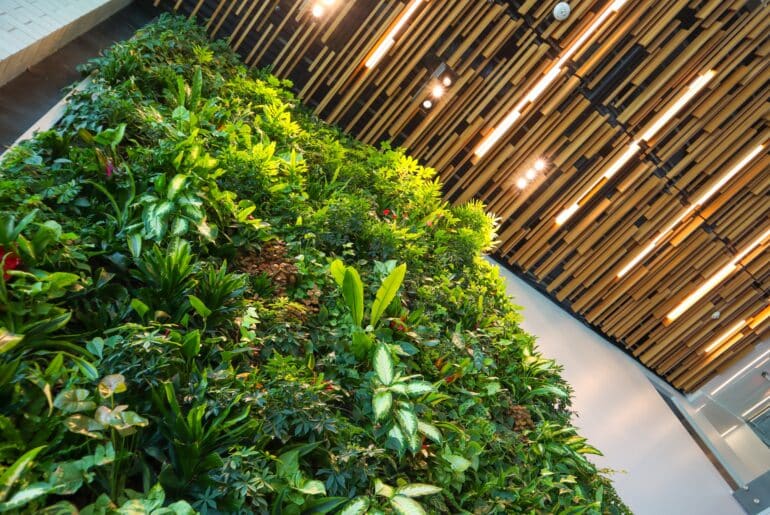In mid-March, Stok had the pleasure of traveling to the South of France for a real estate conference like none other: MIPIM, which is acclaimed as the world’s largest and leading property-related trade show. Along with the annual event in Cannes, MIPIM is known for four other smaller shows: two PropTech-specific shows in New York and Europe as well as two MIPIM Summits in Asia and the UK.
Without a doubt, the most striking aspect of the conference is the location (see photo). A boujee French Riviera destination for yachts, beach goers, and a 24-hour ‘scene.’ Dinner turns to more wine turns to ‘how is it 3 AM’ in this mecca.
But beyond the swanky shores, MIPIM offers key insights into the world of real estate, diving into global trends from all international property sectors. Here are just a few that resonated with Stok’s Matt Macko during his visit.
#1: SUSTAINABILITY AS DURABILITY
MIPIM celebrated its 30th edition this year, providing a “unique opportunity to envision the next 30 years under the lens of ‘durability’: an enabler for economic growth, sustainable performance and community cohesion.”
This inspirational message was backed by MIPIM’s Sustainability Forum where Amelia Slocombe, Managing Director and Head of Legal at the Loan Market Association, the authoritative voice of the syndicated loan market in EMEA, reminded the audience, “Real estate investors should get ahead of the curve when it comes to sustainable finance regulations and environmental, social, and governance (ESG) reporting.”
Why? Well, the European Commission intends to bring forward a range of measures, including establishing a unified classification system of sustainable economic activities; improving disclosure requirements on how institutional investors integrate ESG factors in their risk processes; and creating a new category of benchmarks that will help investors compare the carbon footprint of their investments. Amelia went on to say that banks are much keener to lend on better terms for those who can demonstrate high-performance building.
#2: THE BUSINESS CASE FOR WELLNESS
Most of Stok’s time was spent speaking to groups about our new research alongside our friends at Delos and Blue Building Institute (BBI), who recently announced an agreement in a press release by BBI senior staff: “As early adopters of the wellness agenda in The Netherlands, we’re delighted to announce our alliance with the International WELL Building Institute today to jointly grow the health and wellness movement in the built environment and create opportunities for our stakeholders.”
This unification is clearly displayed through Phil Williams, EVP of Building and Performance at Delos and Advisory Board Member at BBI. He, Rachel Gutter, and Matt presented the very well-supported case for high-performing, productive workplaces (not spaces), demonstrating the financial backing for workplace wellness.
#3: THE (HIGH-)RISE OF MASS TIMBER
Outside of the forum, Sumitomo Forestry presented W350, a 350-meter (1148-foot) tall building with a structure composed of 90% wood. That’s almost 80 feet taller than San Francisco’s very own Salesforce Tower, once the tallest tower west of the Mississippi. The Tokyo-planned project will involve the same quantity of timber as 8,000 new detached homes! More about the project can be found here. Given that urban wood buildings are becoming trendy, Sumitomo Forestry’s mission to turn cities into forests will likely be picking up speed in 2019 and beyond.
#4: SHIFTING CAPITAL TO MIRROR SHIFTING WORKPLACE
A current major global trend is the growing shift of capital into alternative assets. For those entrenched in the data, this move is seen as equal parts a reflation of today’s point in the real estate cycle, increased M&A, and moves toward service-orientated business. At MIPIM, this materialized in the popularity of senior living, student housing, healthcare, and ‘real estate-as-a-service.’
While both senior and student housing have been at the top of investment and development prospects for years now, changes in workplace represents a topic most office investors, developers, and corporations have on their mind. “When we think about the future of office, it is about flexibility and service – it is almost like the ‘hotelization’ of asset classes, where the level of amenities expected is higher,” said David Steinbach from Hines during a panel at the conference.
It appears that three key factors are influencing the future direction of the market. “First you have new accounting rules from this January that mean that office space has to go down as debt on the balance sheet; secondly, people are demanding flexible options to the way they work and this is consistently coming up as one of the most important factors in recruiting talented people; and thirdly, if business life gets better, then employees are happier and more productive,” summarized Mark Dixon, CEO of IWG who owns groups like Regus and Spaces.
As a result, co-working is taking between 20% and 30% of mature markets. It’s not a surprise when studies report that 85% of co-workers ‘thrive.’ Given both market adoption and staggering results, most expect co-working to continue to blossom as office product continually contours to tenants’ wants and needs.
TURNING INSIGHTS INTO ACTION
As always, conferences provide boundless inspiration for innovation across markets, and MIPIM was no exception. If you’d like to discuss any of these key trends or want to connect at an upcoming event, reach out to our team to keep the conversation going. Let’s turn these themes into measured results in 2019 together.



